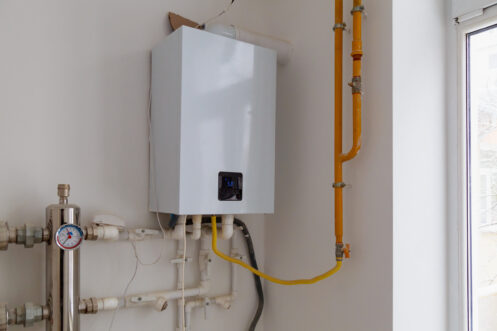How to Effectively Care for Your Home's Hot Water SystemBest Practices for Maintaining Your Home's Hot Water System
Schedule EstimateThis article which follows in relation to Tips For Maintaining Your Hot Water Heater is fairly fascinating. You should keep reading.

Warm water is crucial for daily convenience, whether it's for a revitalizing shower or washing meals. To guarantee your hot water system runs effectively and lasts much longer, routine upkeep is key. This short article offers functional pointers and insights on exactly how to keep your home's hot water system to prevent interruptions and pricey repairs.
Introduction
Preserving your home's warm water system could seem difficult, yet with a few easy steps, you can ensure it runs efficiently for years to find. This overview covers every little thing from recognizing your warm water system to DIY maintenance ideas and understanding when to contact expert help.
Value of Preserving Your Warm Water System
Normal maintenance not only prolongs the life-span of your warm water system but also guarantees it runs effectively. Ignoring maintenance can result in reduced efficiency, higher energy expenses, and even premature failure of the system.
Signs Your Warm Water System Demands Upkeep
Understanding when your hot water system requires interest can avoid major issues. Look out for indicators such as irregular water temperature level, unusual noises from the heater, or corroded water.
Recognizing Your Warm Water System
Before diving into upkeep jobs, it's handy to comprehend the fundamental elements of your hot water system. Typically, this consists of the hot water heater itself, pipes, anode rods, and temperature level controls.
Regular Monthly Maintenance Tasks
Normal month-to-month checks can help capture small issues prior to they intensify.
Flushing the Hot Water Heater
Purging your water heater removes debris accumulation, improving effectiveness and prolonging its life.
Monitoring and Replacing Anode Rods
Anode poles stop corrosion inside the container. Examining and changing them when worn out is crucial.
Examining and Adjusting Temperature Level Settings
Readjusting the temperature setups makes sure optimal efficiency and safety.
Do It Yourself Tips for Maintenance
You can execute several maintenance jobs yourself to maintain your hot water system in leading condition.
Looking for Leaks
Regularly examine pipelines and connections for leakages, as these can result in water damages and higher costs.
Evaluating Stress Relief Valves
Evaluating the stress relief valve guarantees it functions appropriately and prevents extreme pressure accumulation.
Shielding Pipes
Shielding hot water pipelines reduces warm loss and can conserve energy.
When to Call a Specialist
While DIY maintenance is valuable, some problems call for professional competence.
Complex Problems Calling For Professional Assistance
Instances include major leakages, electric problems, or if your hot water heater is continually underperforming.
Routine Expert Upkeep Benefits
Expert upkeep can consist of comprehensive assessments, tune-ups, and making sure conformity with safety and security standards.
Verdict
Routine upkeep of your home's hot water system is vital for performance, longevity, and expense financial savings. By following these ideas and knowing when to seek specialist help, you can make sure a reliable supply of hot water without unanticipated disturbances.
How to Maintain an Instant Hot Water Heater
Before tinkering with your hot water heater, make sure that it’s not powered on. You also have to turn off the main circuit breaker and shut off the main gas line to prevent accidents. Also turn off the water valves connected to your unit to prevent water from flowing into and out of the appliance. 2. When you’re done, you have to detach the purge valves’ caps. These look like the letter “T” and are situated on either side of the water valves. Doing so will release any pressure that has accumulated inside the valves while at the same time avoid hot water from shooting out and burning your skin. 3. When the purge valves’ caps are removed, you have to connect your hosing lines to the valves. Your unit should have come with three hoses but if it didn’t, you can purchase these things from any hardware or home repair shops. You can also get them from retail stores that sell water heating systems. Read the user’s manual and follow it to complete this task properly. When the hosing lines are connected, open the purge port’s valves. 4. You should never use harsh chemical cleaners or solutions when cleaning your unit. Make use of white vinegar instead. It should be undiluted and you’ll probably use about 2 gallons. 5. Now flush your water heater. This task should probably take about 40 minutes. We can’t give you specific directions for this because the procedure is carried out depending on the type, model and brand of your heater. With that being said, refer to the user’s manual. 6. When you’re done draining the unit, you have to turn off the purge port valves again. Remove the hosing lines that you earlier installed on each of the water valves. Put the valve caps (purge port) back in their respective places and be very careful so as not to damage the rubber discs that are found inside these caps. 7. Now that everything’s back in place, check your user’s manual again to find out how to reactivate your water heating system. 8. Once it is working, turn one of your hot water faucets on just to let air pass through the heater’s water supply pipes. Leave the tap on until water flows smoothly out of it. https://www.orrplumbing.com/blog/2014/september/how-to-maintain-an-instant-hot-water-heater/

As an avid person who reads about Tips on Maintaining a Water Heater, I think sharing that excerpt was essential. Sharing is good. Helping people is fun. I am grateful for being here. Please stop by our site back soon.
Visit Url